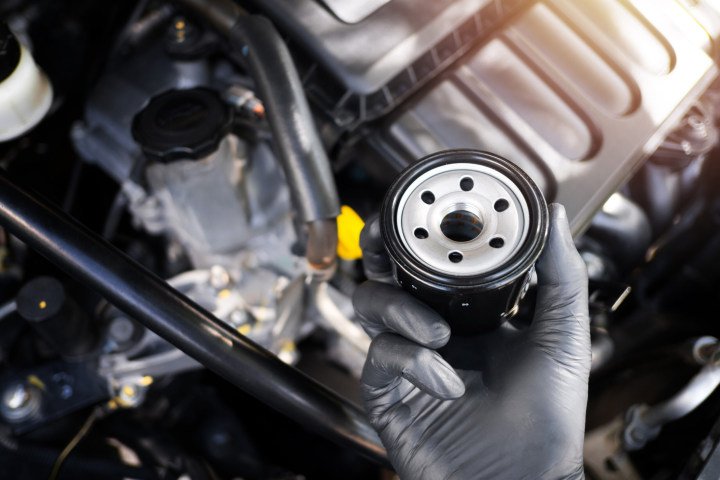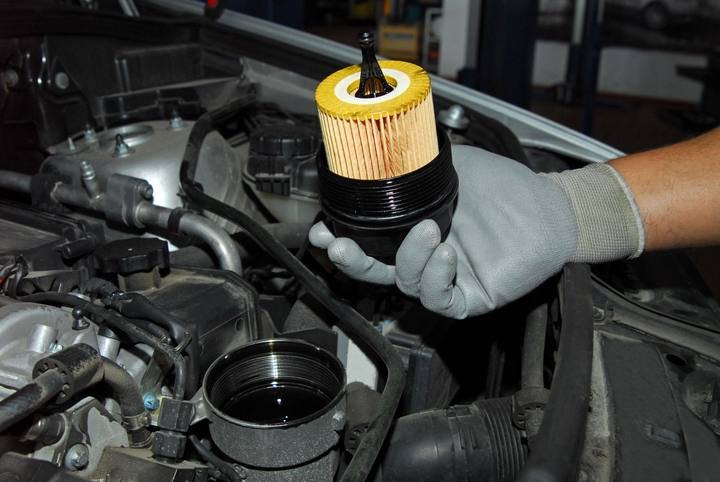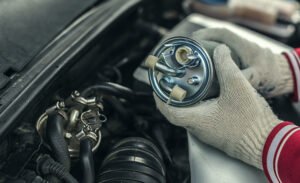Have you ever thought about why oil filters are so important for cars, how oil filters work, and a series of other questions? In this blog, coralfly will tell you what oil filters are, how they work, how they are replaced, and other questions, so that you can understand oil filters in detail.
1.Why is the oil filter so important?
The oil filter plays a vital role in the engine lubrication system. When the engine is working, various impurities such as metal grinding chips, dust, carbon deposits oxidized at high temperatures, colloidal sediments, water, etc. will continue to mix into the oil. These impurities will cause the oil performance to decline, the lubrication effect to weaken, and cause unnecessary wear or damage to the engine parts. Therefore, the oil and oil filter should be replaced regularly. The role of the oil filter is to filter out these mechanical impurities and colloids, keep the oil clean, and extend its service life. The oil filter should have strong filtering ability, small flow resistance, and long service life.
2.There are several types of oil filters ?
There are basically two types of oil filters in terms of appearance: one with an iron shell and one with paper. The iron shell oil filter is also called a rotary oil filter (the most common oil filter), and the paper oil filter is also called an environmentally friendly oil filter.
Spin-on oil filter (the most common oil filter)

Environmentally friendly oil filter

3.How an Oil Filter Works ?
When the oil filter is working normally, the oil inlet check valve of the oil filter is opened, and the oil containing impurities is filtered through the filter element. The impurities will be trapped by the filter element, and the clean oil will flow out from the oil outlet of the filter and enter the lubrication system of the engine. At this time, the bypass valve remains closed, and all the oil is filtered through the filter element to achieve the best cleaning effect. Under normal circumstances, the bypass valve is in a closed state, and all the oil flows through the filter paper and is cleaned to the maximum.
In the following special circumstances, the bypass valve can ensure the normal supply of oil:
Case 1; When the filter exceeds the replacement cycle and the filter element is severely blocked due to impurities, the bypass valve will be opened.
Case 2: When the oil is very viscous, the bypass valve will also be opened in cold start or low temperature environment, allowing the oil to bypass the filter element and enter the lubrication system directly.
When the vehicle stops running, the oil inlet check valve is closed to ensure that the oil in the oil filter and subsequent lubrication system is not drained, and to ensure that when the engine is started again, the required oil pressure is established as soon as possible to avoid dry friction.
4.What are the characteristics of the internal structure of a high-quality oil filter?
- Filter paper: Oil filters have higher requirements for filter paper than air filters, mainly because the temperature of the oil varies from 0 to 300 degrees. Under drastic temperature changes, the concentration of the oil also changes accordingly, which will affect the filtration flow of the oil. The filter paper of a high-quality oil filter must be able to filter impurities under drastic temperature changes while ensuring sufficient flow.
- Rubber seal ring: The filter seal ring of high-quality oil is synthesized with special rubber to ensure 100% oil leakage.
- Backflow suppression valve: Only available in high-quality oil filters. When the engine is turned off, it prevents the oil filter from drying out; when the engine is re-ignited, it immediately generates pressure to supply oil to lubricate the engine. (Also called check valve)
- Overflow valve: Only available in high-quality oil filters. When the external temperature drops to a certain value or when the oil filter exceeds the normal service life, the overflow valve will open under special pressure to allow unfiltered oil to flow directly into the engine. Even so, impurities in the oil will enter the engine, but the damage caused by no oil in the engine is much less. Therefore, the overflow valve is the key to protecting the engine in an emergency. (Also called bypass valve)
5.How often should I change the oil filter?
The replacement cycle of the oil filter is usually the same as the replacement cycle of the engine oil. The specific time depends on the type of oil used and the recommendations of the vehicle manufacturer.
The oil filter is generally replaced every 6,000-10,000 kilometers according to the working environment. It should be noted that the specific replacement cycle may vary depending on the vehicle model, driving habits and driving environment. Therefore, it is recommended to refer to the recommendations in the vehicle maintenance manual and adjust them according to actual use.
Under severe driving conditions, such as frequent short-distance driving, driving in dusty environments, or frequently towing heavy objects, the replacement cycle may need to be shortened. Regularly replacing the oil filter helps maintain the good performance of the engine and extend its service life.
6.How to choose a suitable oil filter?
Oil filters for different models may differ in size, connection and internal structure. Make sure the selected filter matches your vehicle model, year of manufacture and engine type. You can refer to the vehicle owner’s manual or consult a professional for specific model information.





